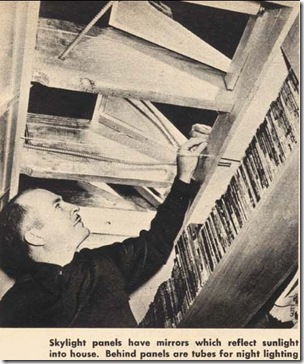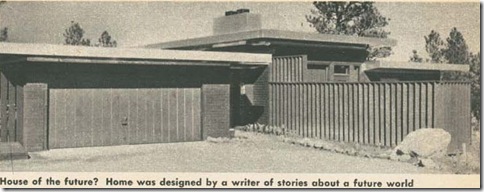Engineer, author and genius Robert A. Heinlein, one of my own favourite authors, used to contend that architects Frank Lloyd Wright and Robert Neutra were geniuses in their own right, but they "needed to learn from the Gilbreths."
 The Gilbreths were Frank & Lillian Gilbreth, famed in the fifties for their time-and-motion studies and work-flow studies to increase production efficiencies. Their skills were used mostly on the commercial front; on the domestic front however, and they were parents to twelve children, they suggested such time-saving techniques as using once bar of soap in each hand to speed up bathtimes. Explained one of the twelve later in Cheaper by the Dozen, "Yes, at home or on the job, Dad was always the efficiency expert. He buttoned his vest from the bottom up, instead of top down, because bottom up took only three seconds and top down took seven. For a while, Dad even tried shaving with two razors, but he finally gave that up - he grumbled, ‘I can save 44 seconds, but I wasted two minutes this morning putting this bandage on my throat.’ It wasn't the slashed throat that really bothered him - it was the two minutes."
The Gilbreths were Frank & Lillian Gilbreth, famed in the fifties for their time-and-motion studies and work-flow studies to increase production efficiencies. Their skills were used mostly on the commercial front; on the domestic front however, and they were parents to twelve children, they suggested such time-saving techniques as using once bar of soap in each hand to speed up bathtimes. Explained one of the twelve later in Cheaper by the Dozen, "Yes, at home or on the job, Dad was always the efficiency expert. He buttoned his vest from the bottom up, instead of top down, because bottom up took only three seconds and top down took seven. For a while, Dad even tried shaving with two razors, but he finally gave that up - he grumbled, ‘I can save 44 seconds, but I wasted two minutes this morning putting this bandage on my throat.’ It wasn't the slashed throat that really bothered him - it was the two minutes."
Anyway, ever since I first read Heinlein's comment I wanted to know more about the Gilbreth's, and about Heinlein's own house in Colorado that he designed and built for himself in the late forties. And here it is, presented in a 1952 Popular Mechanics article in all its rude efficiency. It's an engineer's house all right, but he has learned form the Gilbreths.


2 comments:
I have always been fascinated by the Gilbreths and their theories! As a child, I very much enjoyed the stories written by their children. As an adult, I studied their efficiency theories on my own and in grad school. Their ideas had many real applications, some of which are still in use today. For example, it was Frank Gilbreth who suggested some techniques for creating efficiencies in surgical operating rooms, such as organizing the instruments, etc. Very cool!
Very cool indeed. I found out about the Gilbreths through Heinlein -- he's a great teacher, you know -- and then found much to admire. I liked the fact that Frank Gilbreth was originally a stone mason, not an academic, who began his career in efficiency by creating a more productive method to lay blocks.
That was just the beginning. :-)
Post a Comment